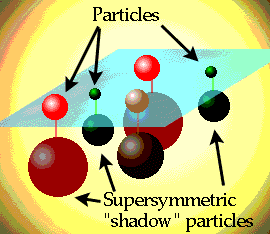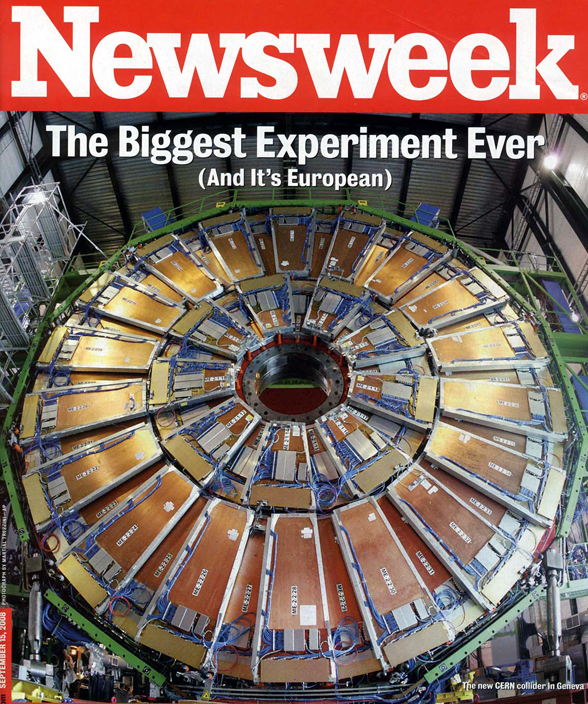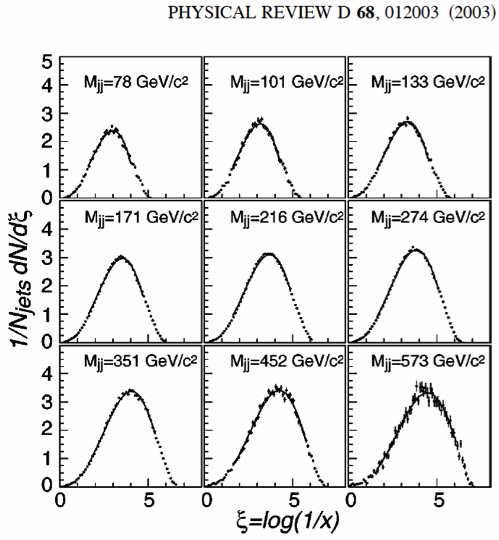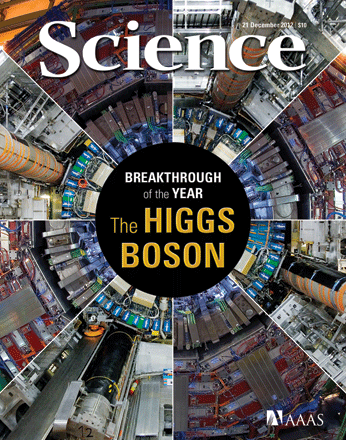
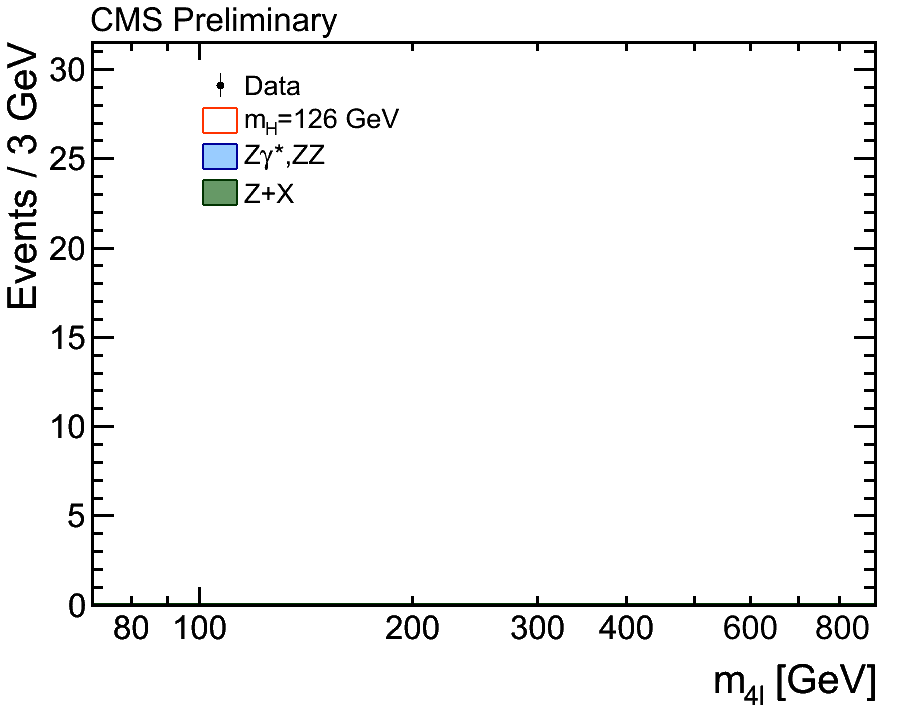 |
The standard model is the experimentally verifiable theory that encompasses our current understanding of the three fundamental forces (strong, electromagnetic, and weak) and the elementary constituents of matter (three generations of quarks and leptons). The model is build on a premise of a particular type of symmetry, so-called local gauge invariance, that, however, forbids particles to have masses, which we know they have. In 1964, Brout, Englert, and Higgs suggested a possible way out. The residual consequence of the suggested solution was a prediction of new type of a particle that has become known as a Higgs boson. The standard model has had an unprecedented success in describing the wealth of experimental data, except for one setback---the predicted Higgs boson has been nowhere to be seen, not until recently that is. The Large Hadron Collider at CERN, commissioned in 2009, was built to answer unambiguously the question of whether the putative Higgs boson exists or not.
Since 2004, the main focus of my research program at LHC, as a member of the CMS Experiment, was on the Higgs boson physics: first, on preparations for the Higgs boson search; then, after the start-up of LHC in 2009, on the search itself, which, in 2012, culminated with the discovery of the Higgs boson with a mass near 125 GeV in a combination of searches in multiple Higgs boson decay modes; and now on measuring properties of the discovered boson. In 2009-2010, I was a convener of the CMS Higgs Physics Analysis Group, coordinating all Higgs boson searches in CMS. In 2011-2012, I was a convener of the CMS Higgs combination group. And all this time, I have also pursued an observation of the Higgs boson and now measurements of its properties in the so-called golden four-lepton decay channel H→ZZ→4l. This channel provides the most accurate measurement of the Higgs boson mass and allows for disentangling its spin-parity quantum numbers. |





